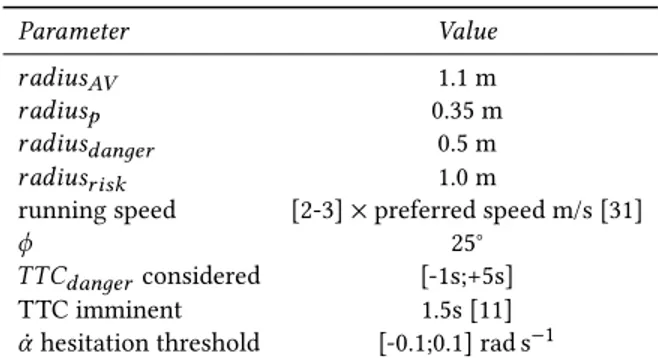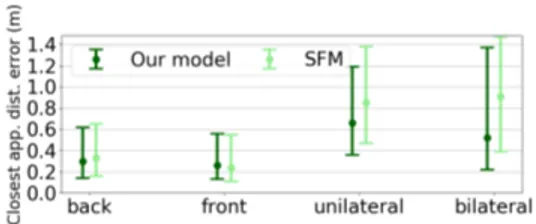Un modèle à base d'agents pour prédire les trajectoires des piétons dans des espaces partagés avec un véhicule autonome
Texte intégral
Figure




Documents relatifs
Is there any difference in visual behaviors and driving behaviors between two states driver ’s awareness of and unawareness of something on road (pedestrian in this case).. Is
Given a Hilbert space H characterise those pairs of bounded normal operators A and B on H such the operator AB is normal as well.. If H is finite dimensional this problem was solved
To study the feasibility of the proposals in (Behzadan, Munir, and Yampolskiy 2018), this paper adopts the RL- based model of substance addiction in natural agents (Re- dish 2004)
A similar situation is found in the plurivaluationistic semantics for other vague predicates besides our example of tall: typically, the class of admissible fuzzy models P can
The main hypothesis is that combined effects of high temporal pressure inducted by pedestrian apparition, situation complexity (simple or very complex situations) and lack
If one tries to follow the same line in the case of operators that are only periodic with respect to a sub-lattice, the problem one encounters is that, as the resolvent of the
Paradoxi- cally, individuals of foreign origin typically belonged either to type 4 (characterized by desyn- chronized eating rhythms and a majority of meals taken in front of
For example, figure 5 shows the number of exchanges (passengers entering into plus passengers getting of the trains) in 5 seconds real time, when the number of


